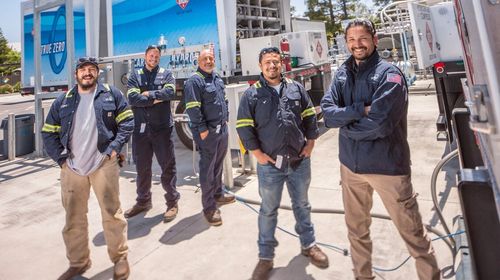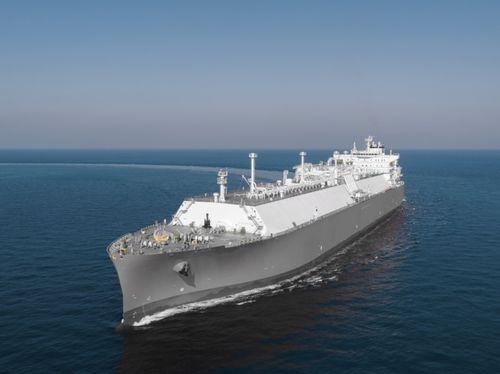Tenaska, a Nebraska-based energy company, is advancing a portfolio of more than 10 carbon capture and sequestration projects in the US, Vice President Bret Estep said in an interview.
The portfolio includes three previously announced projects that are highly developed along with seven others that have not been publicly disclosed, Estep added. Tenaska is focused on the transport and storage aspects of the CCS value chain.
“Our base facility is 5 million metric tons per year of storage capacity, and then the necessary pipeline infrastructure to bring those emissions in,” he said.
The base facility design will cost approximately $500m to build, but varies depending on the land position, site geology, and required pipeline miles, Estep said.
“For us, as we plan, I generally use a big rule of thumb to say these are around $500m overnight cost projects,” he said. “Just the storage facility itself, you might be in the $250m to $400m range. And then in really difficult places where there are a lot of pipeline miles, and those are expensive pipeline miles, it might be another $200m or $300m of just pipe.”
Estep says that Tenaska, as a private company, has flexibility on the eventual financing structure for projects, but that project financing is an option. He said the company has held discussions with potential financial advisors but declined to comment further.
Tenaska’s three announced projects are the Longleaf CCS Hub in Mobile, Alabama; the Pineywoods CCS Hub in Houston; and the Tri-State CCS Hub in West Virginia, Ohio, and Pennsylvania.
According to Estep, additional projects are going forward in Corpus Christi, New Orleans/Baton Rouge, and Central Florida. Further inland, Tenaska has two projects in Dallas, another in Oklahoma and another in Indiana.
Finding emitters
The projects “are not all easy – there’s a lot of competition out there,” Estep said. “In some places like let’s say Houston, there are a lot of other folks around, but there’s also a lot of emissions around. So I think there’s room for many people to be successful here.”
In other places like Mobile, Alabama or the Tri-State project, which are harder to develop, Tenaska is the only CCS developer, he added.
As an example, the West Virginia project will likely be more costly to develop, given the suboptimal geology of the region. Still, the project benefits from a $69m DOE grant to support geologic characterization and permitting for the site.
For its CCS business, Tenaska makes money through what Estep calls a “plain vanilla” version of transport and storage: the take-or-pay contract.
“The emitter installs the capture equipment, they’re the taxpayer of record – they have whatever commodity uplift or green premium they can get on their product,” he said. “And they simply need someone to transport and store that CO2 long term really to qualify for that 45Q” tax credit.
For the Longleaf CCS project in Mobile, Estep places potential customers into four quadrants. The first is existing emitters like steelmakers, power plants, gas processing and pharmaceutical companies. “There’s less project-on-project risk in that way.”
The second is blue molecules. “There’s a growing blue molecule effort in that part of the world,” he said. Quadrant three is combined cycle with capture (though Tenaska is not pursuing a combined cycle for Longleaf) and quadrant four is direct air capture.
Tenaska is a participant in the Southeast DAC Hub, led by Southern States Energy Board, which received a grant of over $10m from the DOE.
“We see many emitters across industries from gas processing to cement, steel, power gen, you name it,” Estep said. “They want to do their own capture, or they want to deal straight with a capture technology, an EPC, or a standalone capture-as-a-service provider. And then what they really want is someone to come to their fence line and take the CO2 and store it long term, durably, safely,” he added. “That’s what we do.”
‘Intercept problem’
Tenaska is still about a year away from beginning to order long lead time items like specialized metallurgy or pipe, but will begin putting in orders once it has more visibility on matching up its development timeline with that of its customers.
Early on, Estep and his teams were sprinting to acquire land positions and submit permits, including some Class VI permits from the EPA, which are under review. But “the script almost totally flips” at that point, because under Tenaska’s hub and spoke model, “we want to be optimized for customers,” he said.
The firm looks at permitting timelines and the earliest likelihood of construction and injection versus when the emitter will likely take FID and begin capturing, “which we call the intercept problem,” Estep said.
Tenaska is the 100% owner of the projects at this point, and Estep believes they have put together a unique portfolio, “in that it’s diversified by customer, it’s diversified by EPA region, it’s diversified by geology and state.”
Estep added: “These kind of assets where there’s geology and storage, they can go the power gen route, they can go the hard-to-decarbonize route, cement and steel, they can go the new power gen route that’s advanced, they can go direct air capture, they can go to the molecule.”
“It’s a really interesting set of infrastructure projects that we are very bullish on for that reason.”







